MyCashmere - Sustainable Cashmere Pieces Made in Italy
WHO DOESN’T WANT TO DRESS COMFORTABLE AND CHIC AT THE SAME TIME? ONE YEAR AGO, FELICE LANGKAMP FOUNDED HER SUSTAINABLE CASHMERE BRAND WITH EXACTLY THAT IN MIND: TIMELESS, LUXURIOUS KNITWEAR PIECES FOR A CAPSULE WARDROBE. HER DESIGNS ARE PERFECT FOR THE HOME OFFICE AS WELL AS ON THE GO. WITHIN THE LAST YEAR, SHE BECAME AN EXPERT ON CASHMERE AND TODAY SHE’S SHARING HER KNOWLEDGE WITH US IN THIS MEET THE FOUNDER INTERVIEW. WHILE WE MEET HER IN GERMAN COUNTRYSIDE, SHE TELLS US ALL ABOUT HER FOUNDING STORY, HER BIGGEST LEARNING EXPERIENCES AS A FIRST TIME ENTREPRENEUR, AND GIVES US MANY TIPS ALL AROUND CASHMERE.
wordy by SARAH MARIE FRANKEN
photographs by ANDREW DAY
video by ANDREW DAY & JAN OLIVER FRANKEN
Sarah: Congratulations on one year of MyCashmere! It’s your first anniversary and we’re sitting here to talk about your founding story! Let’s start at the beginning - what was the moment you decided to start a sustainable cashmere brand?
Felice: I got the idea during the global lockdown. Everybody wanted to be comfortable while staying at home, so people didn’t get ready in the morning anymore. As a result you saw mental health declining because people were not really taking care of themselves or feeling good in what they were wearing. I started to think of different clothing options that made you feel comfortable but still put together - this is where the idea of cashmere came in. It is the perfect fabric that sits between comfortable and elegant!
What makes the cashmere sustainable?
For us at MyCashmere, we use either a sustainable 100% cashmere yarn that is certified by the Sustainable Fibre Alliance or we use recycled cashmere.
Tell us more about that, what is recycled cashmere?
Recycled cashmere can be made in two different ways. One is post-factory, so for example when my factory is making my 100% cashmere items, whatever pieces are leftover can be shredded down and reengineered into new yarn. And the other option is post-consumer waste. If you as a consumer don’t have use for a sweater anymore, it can be sent in, shredded down and spun into new yarns. This is really cool, because it is giving a second life to something, that would have otherwise been thrown away, so this recycled cashmere is really closing the loop.
Can you tell us more about the Sustainable Fibre Alliance?
They are a board that is focused on making sure that cashmere is being herded and sourced sustainably. Cashmere traditionally is a very luxurious item with a high price-point. But what’s happening nowadays is, that fast fashion companies and high-street brands offer cashmere at a low price-point. This causes a big sustainability issue from the actual herding of the cashmere goats themselves, because they have this massive demand to fulfill. And the SFA is really focused on going in on the ground to make sure that the herders are following a rigorous set of standards to ensure the animals are treated well, the environment is not harmed and local herding communities are supported.
Where does the yarn get made into garments?
I manufacture all the pieces in Perugia, Italy, which is just outside of Florence. The area of Perugia is historically very well-known for it’s cashmere production expertise. It’s a place where families and generations have been knitting, spinning and manufacturing cashmere for centuries. That’s why it’s also called the cashmere valley! I think there is just something so special about a place where you have this generational craftsmanship. I read in a book once, that it takes 10.000 hours to become an expert at something. If you have generations passing down knowledge and really growing-up with that know-how, the craftsmanship becomes the absolute best.
What is the most interesting thing you’ve found out about cashmere, something you didn’t know before starting your brand?
The fact that cashmere is not just for the colder months. It is from the cashmere goat’s undercoat, and is meant to keep them warm in the winter and cool in the summer, in the Himalayas it’s close to the sun it is quite hot in the summer, it is actually very breathable and when done in a thin and light way, cashmere can actually be perfect for the summer.
And that’s probably why you have some short pieces, right? Like a high-wasted shorts and a few different tops. Can you tell us more about those?
I would love to! We have the Olivia bralette for example, which has a funny story. It was created to be an undergarment bra and the more we went through trials, we saw that it actually works very well as a cropped top you can wear in the summer. And then we have the one-shoulder top, called the Amira top. All garments are named after important people or places in my life. The Amira top is my favourite piece! No matter when I wear it, I always get asked where it is from, and I get to say that it’s my brand which is a really special feeling.
What’s most important to you when designing the pieces?
Making sure that the pieces are timeless, this way they grow with you but also transcend any current fashion trends. This makes them perfect for passing them down through generations. I think this is a reason why cashmere is the embodiment of slow fashion. Nowadays, we are so used to buying new things constantly. For me, cashmere is this perfect fabric, that you treasure and possibly pass down to someone you love.
that is so good to think of pieces being kept for a long time. I think the disposable mindset is one of the biggest issues of the fashion industry.
Exactly! Nowadays one of the biggest issues in the fashion industry specifically is the speed in which we consume. It’s great to recycle, and that’s a good solution for closing the loop the end of a garment’s life. But I think it’s important to take one step back and think about the initial purchase to begin with.
What was your biggest learning experience from the first year?
One of the biggest lessons of being a first time entrepreneur is learning to prioritize. I am also a little bit of a perfectionist, I always keep this phrase with me that somebody told me once: “Done is better than perfect!”. There is so much to do, sometimes you need to be more efficient and find ways to work smarter.
And what is a way you work smarter?
I think it’s compartmentalizing. It’s important that when you focus on one topic, you focus on that topic specifically with no distractions. As if it would be a massive organizations, I schedule time for each area of the business. I sometimes call it “I’m meeting with my finance team, or marketing team.” And then you really block out that time to make sure that you do that end-to-end and you focus on in just that area.
That’s a really good tip, doing one thing after the other and completing each cycle. A little bit about your background story, you’ve worked seven years for different luxury brands in the fashion and jewellery industry. How does this experience influence your work now with MyCashmere?
I really learned an appreciation and a love for craftsmanship. This is why I chose Italy as the core of the brand. I think it’s really beautiful how hands make pieces, especially when you’re talking about artisanal pieces. This expertise really shapes a brand.
Last question. This is what I ask all founders I interview. At Luméra we want to shine a spotlight on people who have a good impact in the industry. If you could hold that spotlight on another person, brand or topic in the fashion industry, what would it be?
I would have to say a sustainable jewellery brand Leni Adam, by a dear friend of mine. Her name is Leonie Adam. She is from Switzerland and I actually met her through my gemological degree. My second passion is gemstones and jewellery. I studied three years to become a certified gemologist in London, this is where I met Leonie. What I love about her jewellery brand is that she only uses recycled gold, so again, really closing the loop and using something pre-existing rather than newly mined gold. She only uses Swiss gemstones! Believe it or not, Switzerland has gemstones, it surprised me as well. Mainly quartz. She goes to the mountains herself in Switzerland and uses these gemstones in her designs, which are manufactured in her atelier in Switzerland. It’s all locally produced. And I think that is something so beautiful, so meaningful.


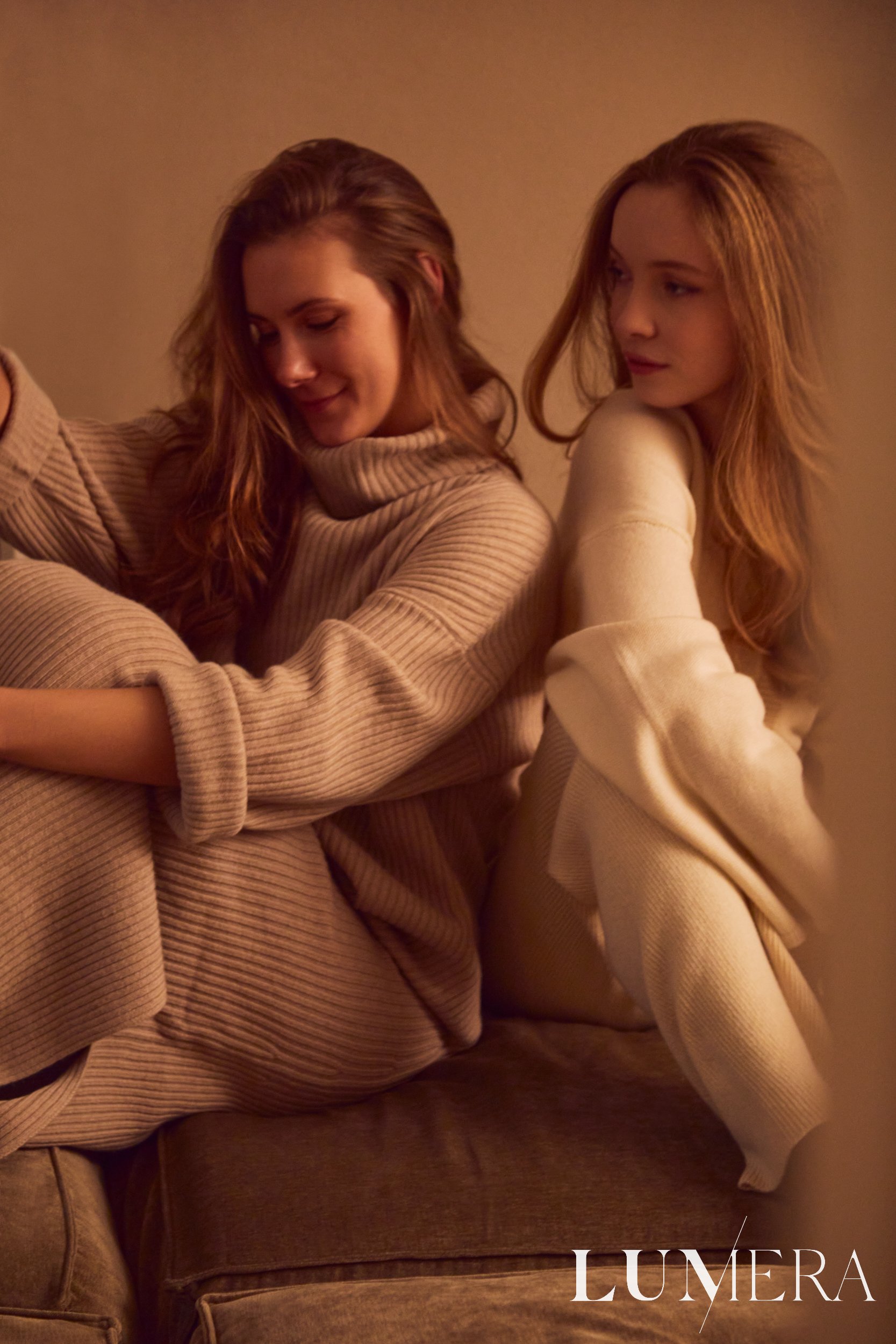
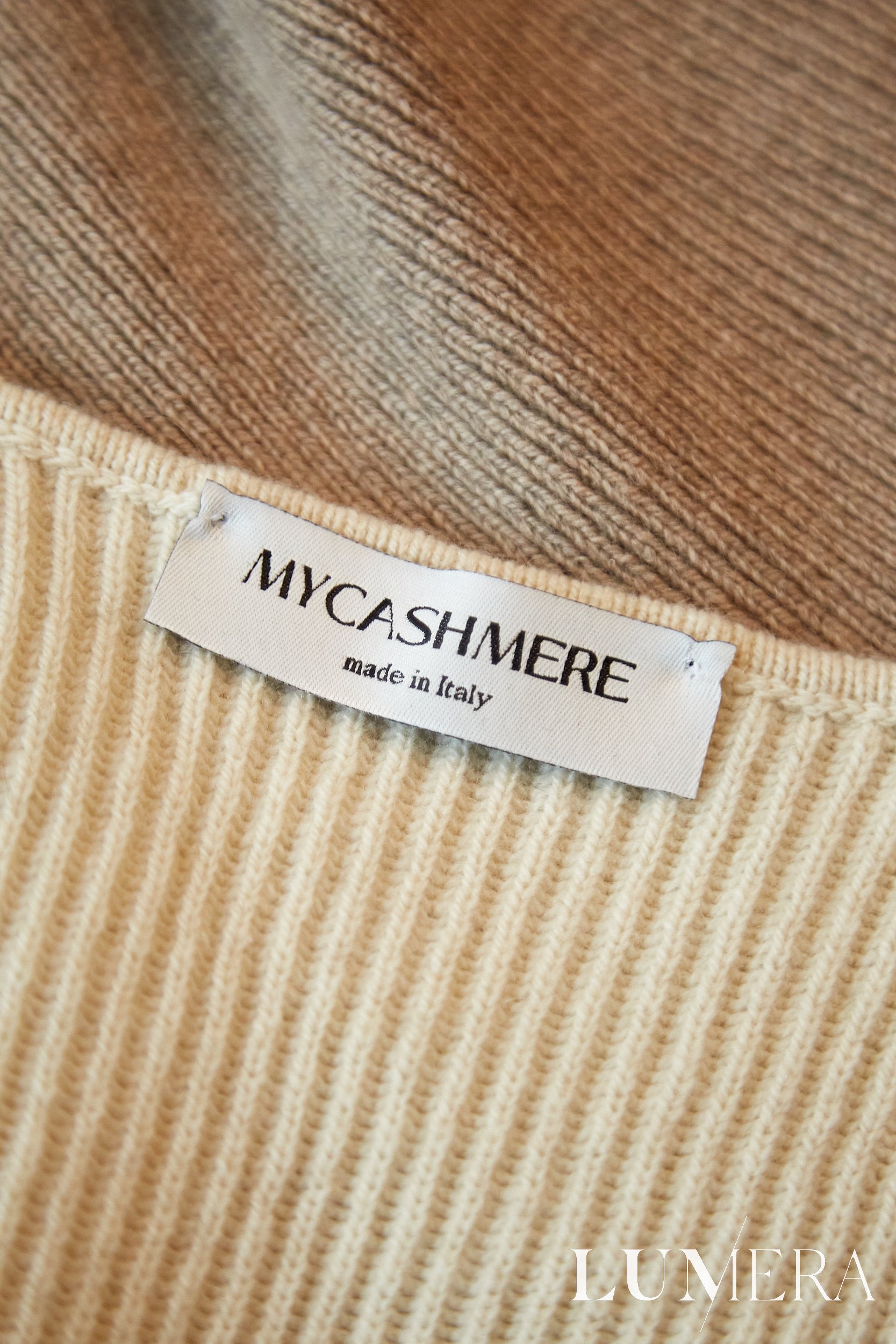
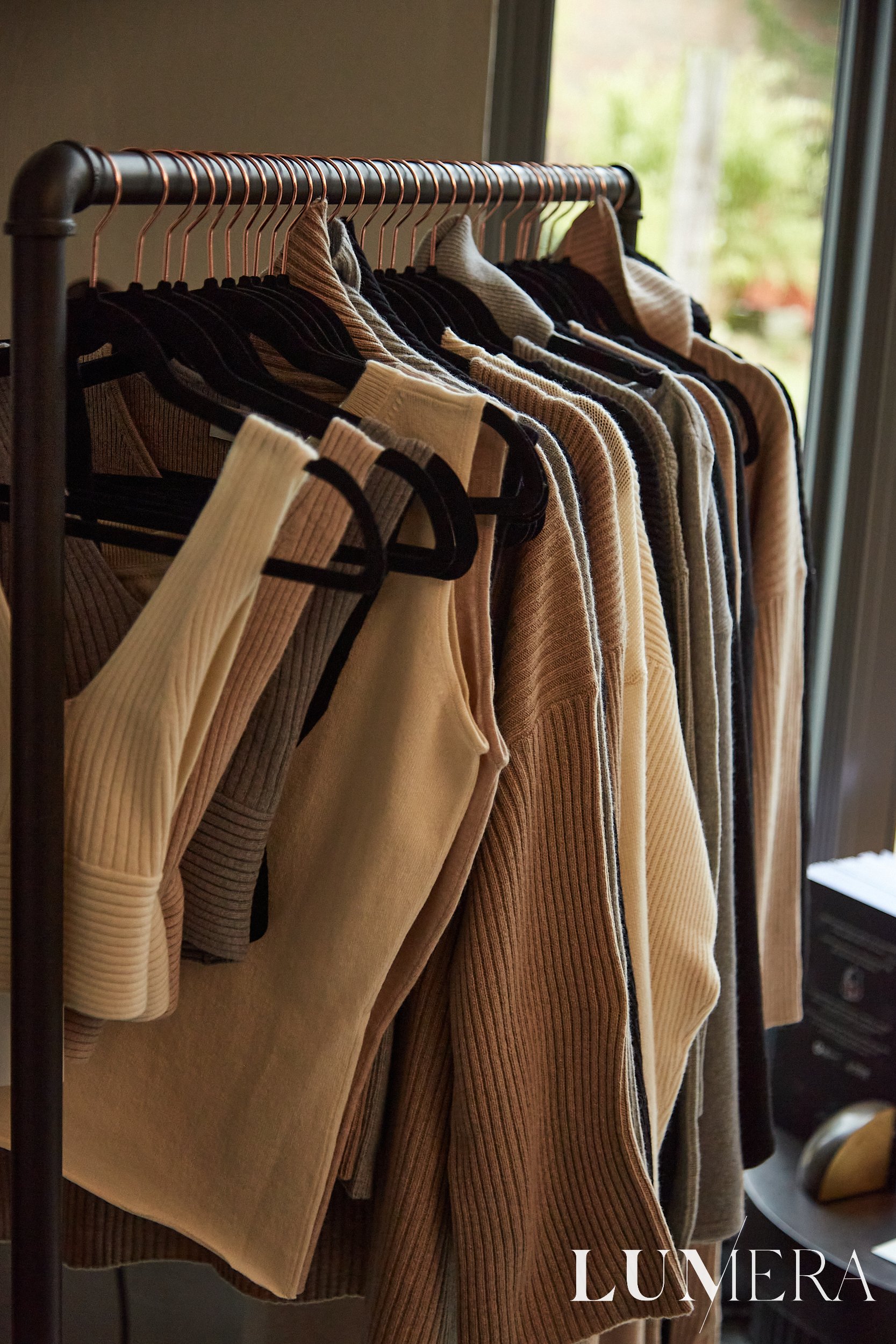
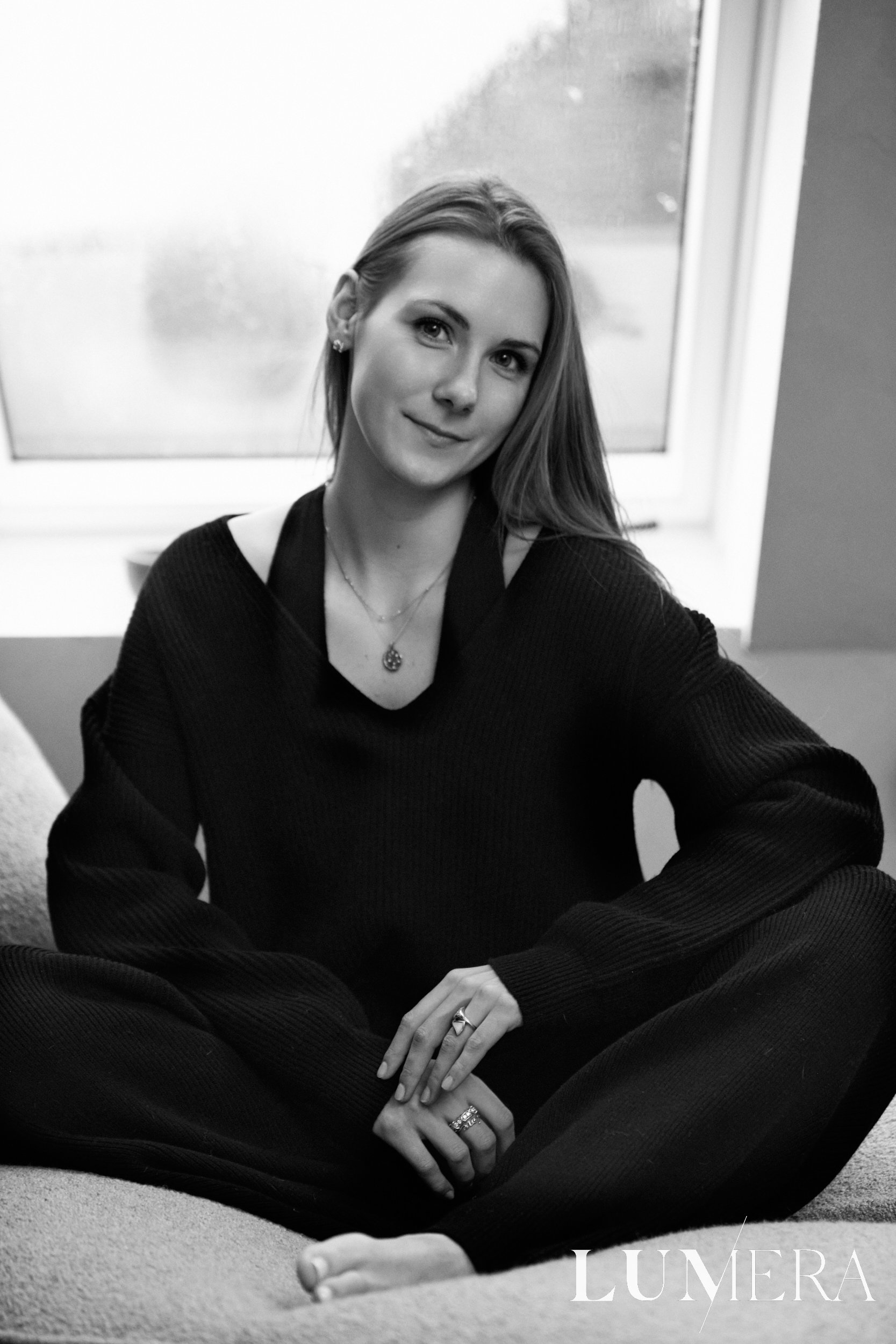
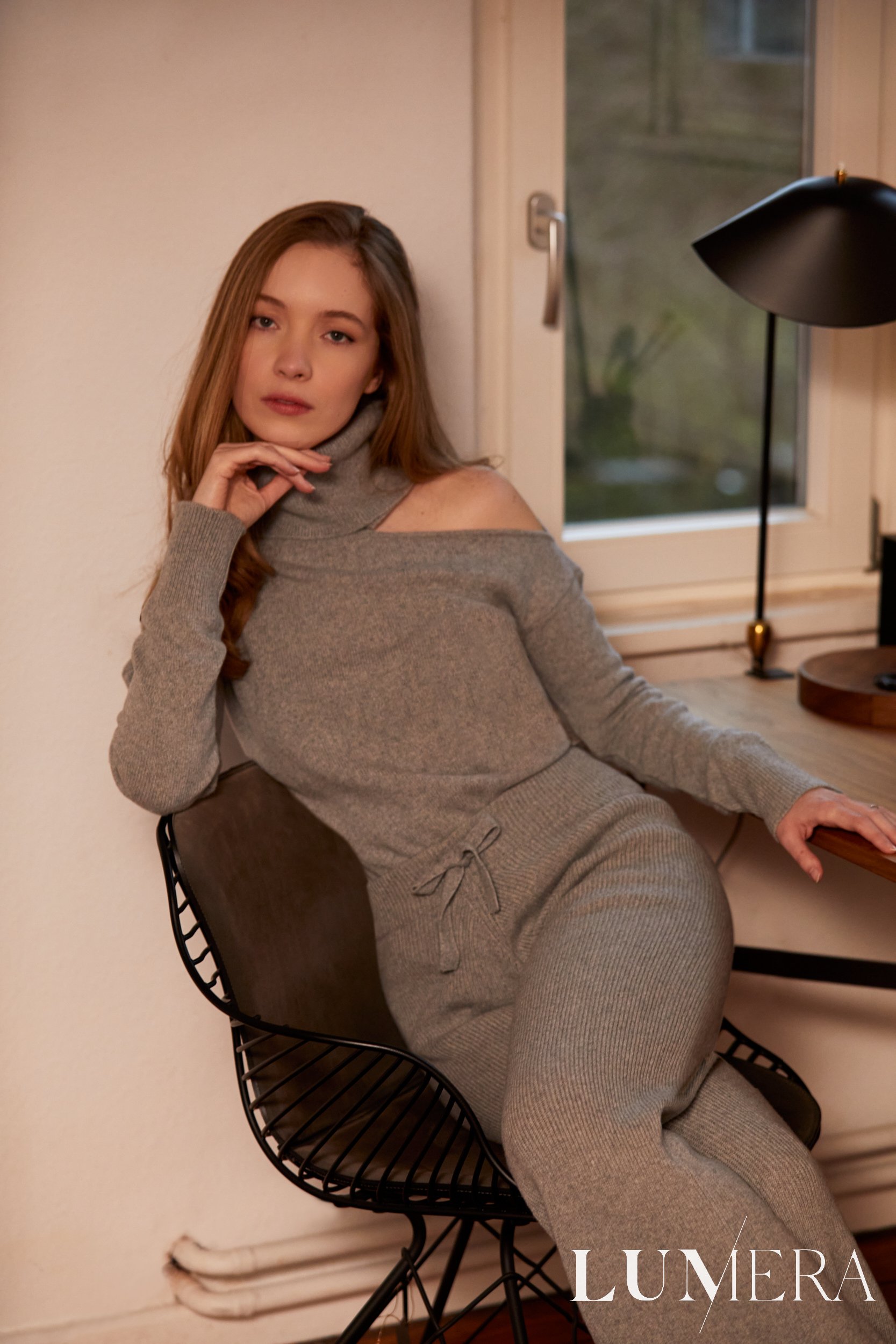
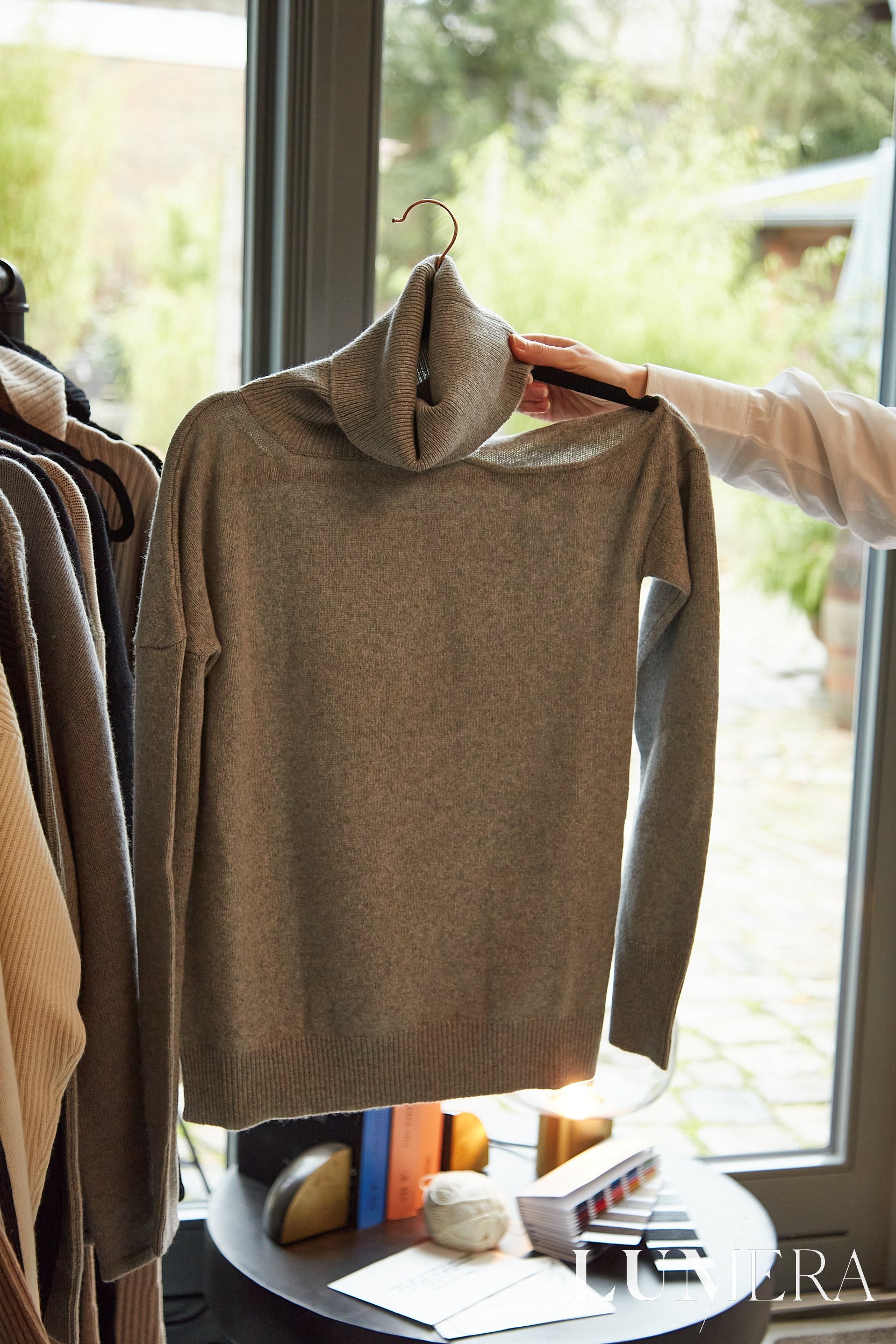
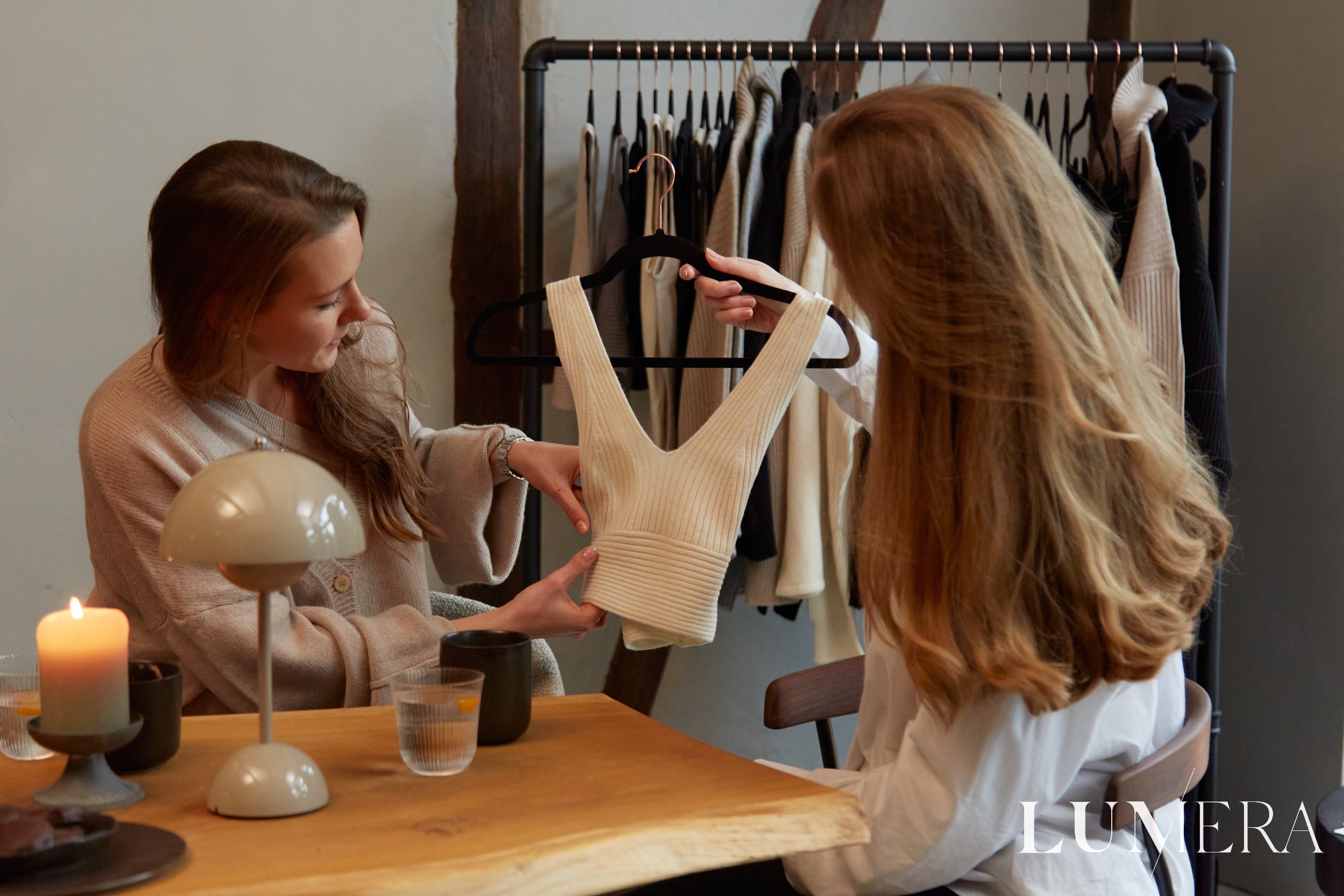
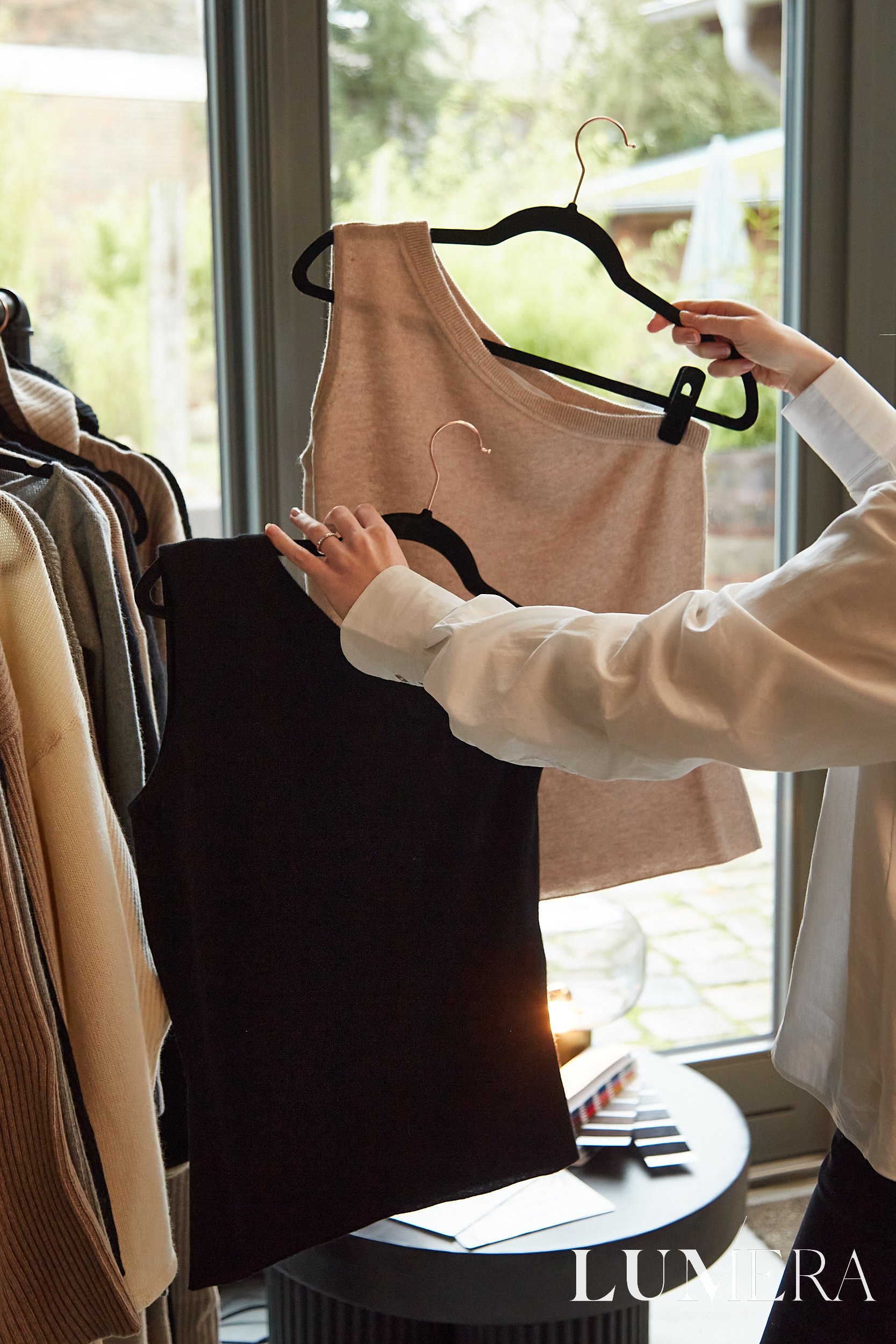
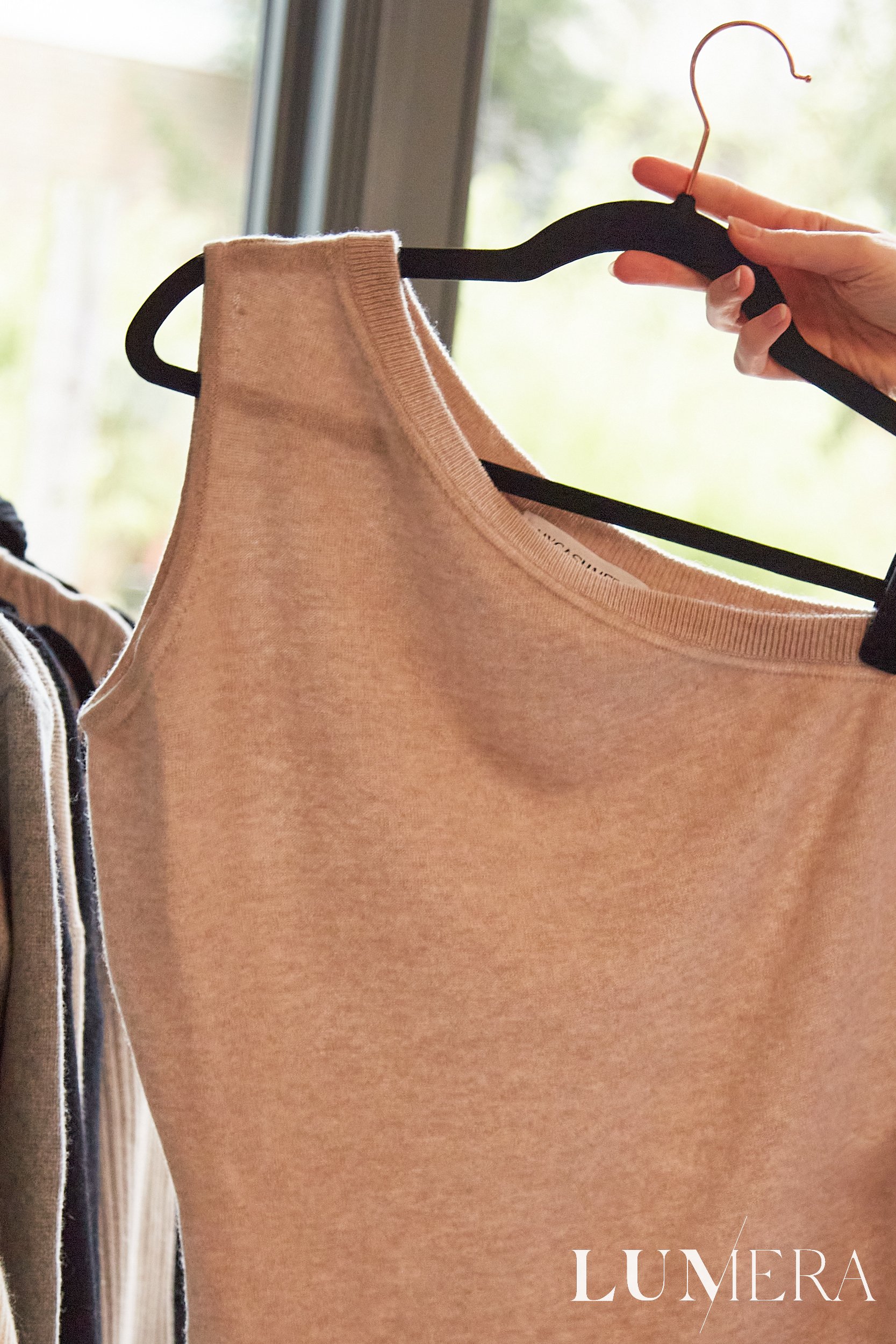


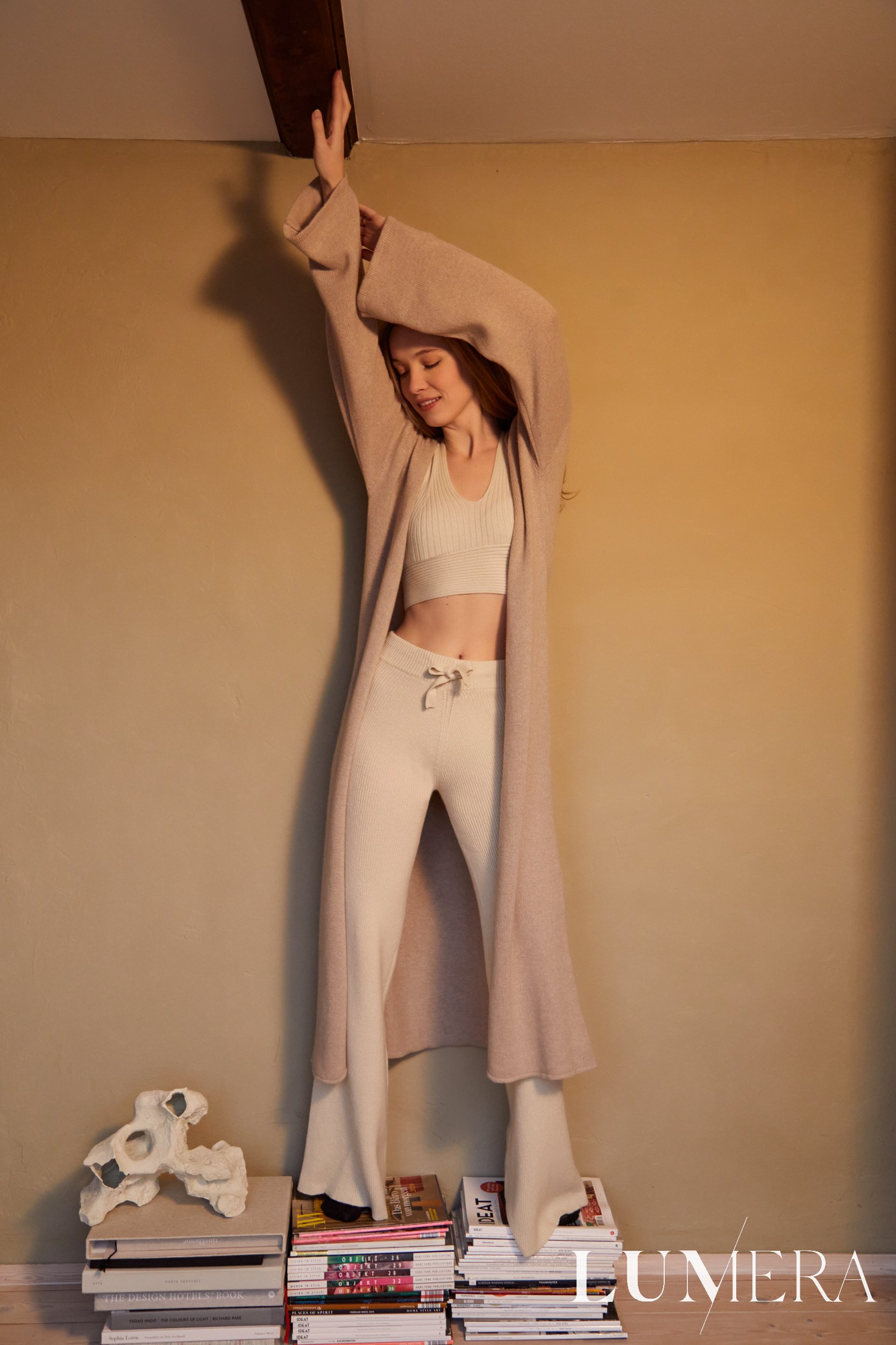

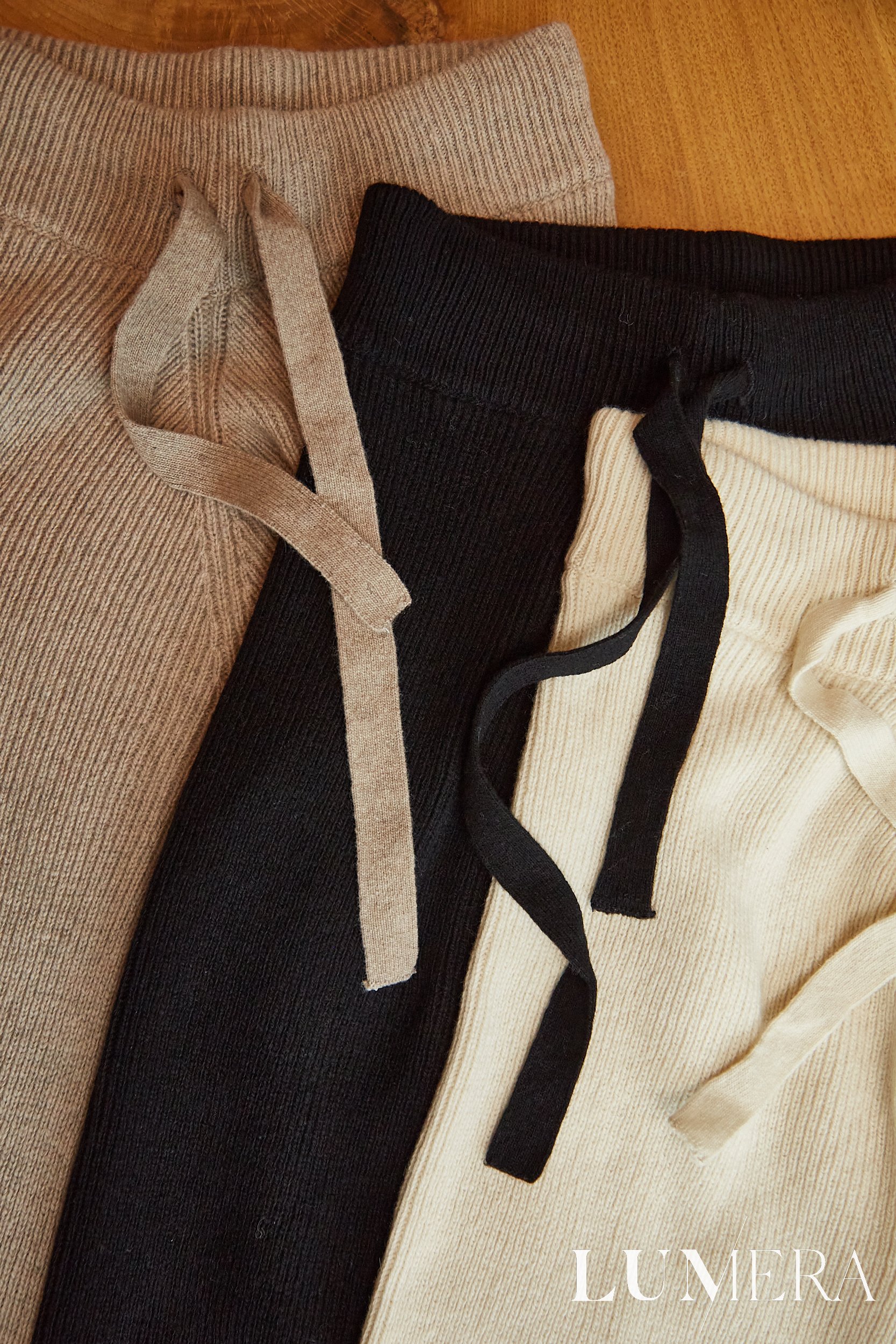
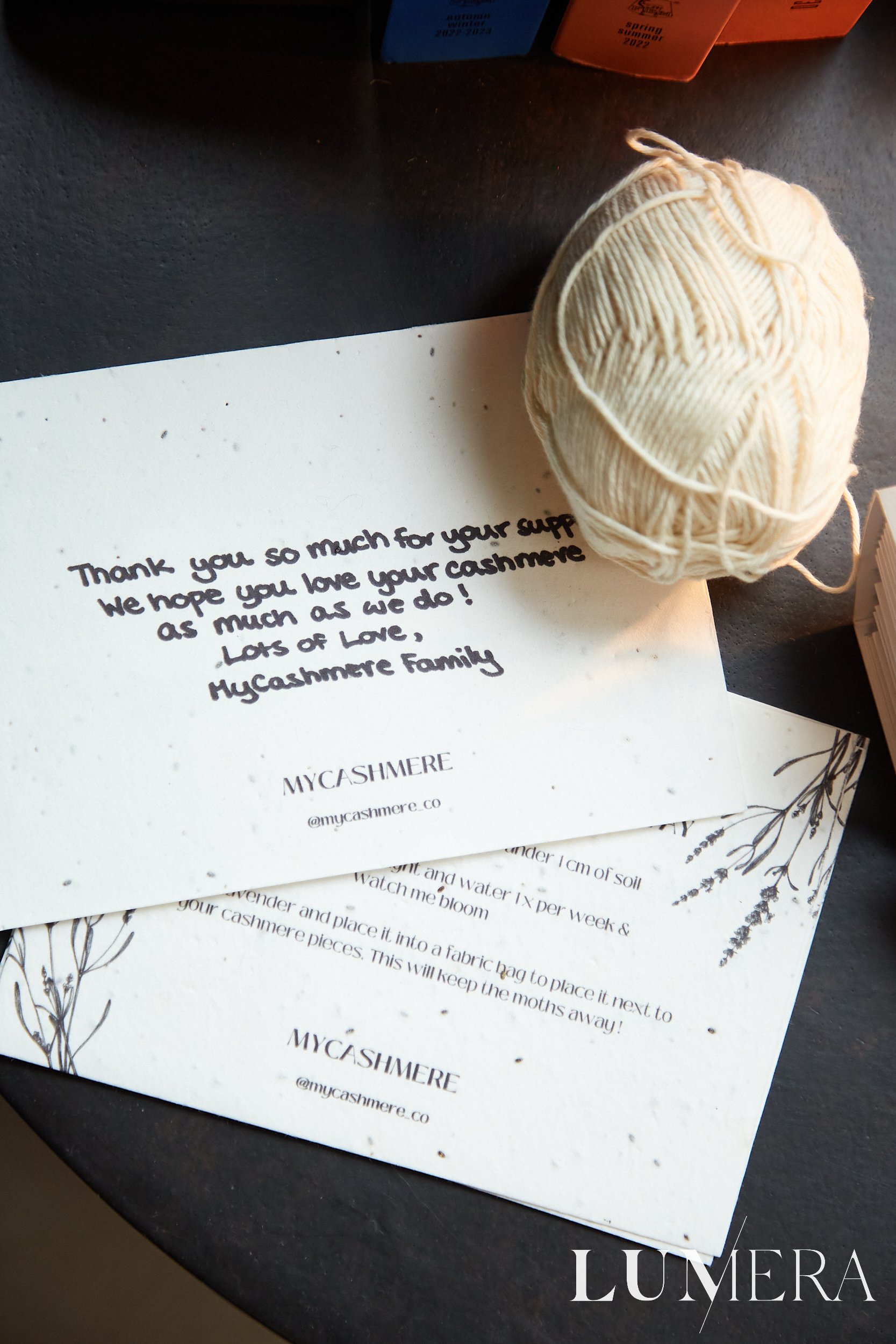



Georgia Gibbs styles six summer evening outfits in New York City within our Sustainable Style Challenge series. All pieces are slow fashion and from her own wardrobe.